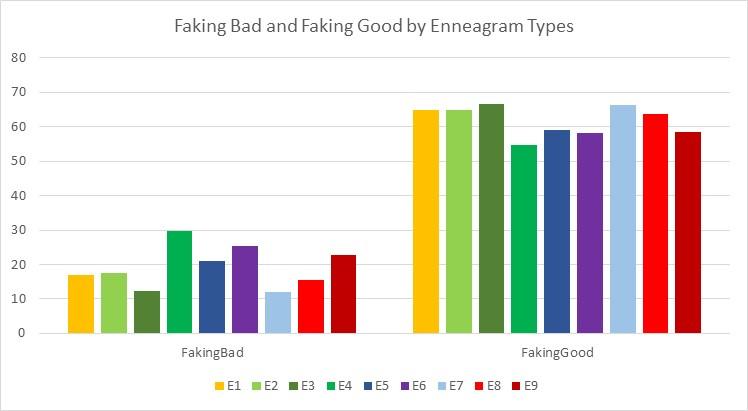Our mindset makes a significant difference in how people engage with their personal journey through the Enneagram. If a person has a fixed mindset toward themselves and their potential to grow or change, they may find the process of self-reflection and personal change much more challenging.
"Whether you think you can or whether you think you can’t, you’re right." -Henry Ford
The mindset that clients hold about themselves, who they are as a person and the potential or possibility for them to be a different person tomorrow than they are today can easily become a self-fulfilling belief. Have you ever had a client who predicted that they would fail at a project, set out with that mindset and then exclaimed “I knew this would happen. I'm so useless.” when their prediction came true? In these moments, key information in this article could equip you to break the cycle.
Integrative Enneagram Solutions has drawn from recent psychological research that shows that the most effective way to improve performance is to focus on building a growth mindset and the belief that “I can do better next time”. As a coach, your challenge is to guide your client from “I always mess up” to “I can do better next time”. Understanding the Faking Good” and Faking Bad measure will give you insight into how to approach your client’s unique challenges.
‘Faking Good’ and ‘Faking Bad’
In the world of psychometric testing and coaching, the terms ‘Faking Good’ and ‘Faking Bad’ are often used to describe common patterns or orientations that respondents might present in response to self-evaluation and coaching. ‘Faking’ is described as a motivated effort to show oneself in a particular way, especially in reference to a psychological testing, coaching or feedback situation – an attempt to present a particular image for some reason.
These concepts measure the filters that some individuals apply to protect themselves from changing, by trying to convince themselves and others that they are absolutely fine (Faking Good) or absolutely hopeless and unable to change (Faking Bad). Of course, all people are a blend of potential and limitations, strengths and weaknesses, so neither of these positions is entirely true. These are known as “reality distortions” as they reflect ways that people can filter and distort their reality, not seeing themselves the way others see them.
Faking Good and Faking Bad are mindsets that limit the potential for growth and development, by choosing to be stuck and unchanging rather than engaging in the hard work, effort and vulnerability involved in growing and stretching as a person.
“For many people, the power of their excuse is more powerful than their dreams.” -Robert Kiyosaki
Like two sides of a coin, ‘Faking Bad’ and ‘Faking Good’ represent two opposite views of self, both acting as defences:
Faking Bad: A person stuck in a pattern of hopelessness who avoids having to change by believing, “I am bad; nobody accepts me; nothing will change”. These individuals attempt to convince others that they are ‘hopeless cases’ and the only possible solution is that we all learn to work around their flaws. They project that they have ‘given up on themselves’ and are beyond help, or that any efforts they might make to change would be wasted anyway as they probably would not work or result in real change. They may say things like “I can’t do anything right” or “I’m too stupid to change”.
Faking Good: A pattern of defence that protects a person from facing anxiety or weakness, “I’m fine; everything is great; no need for change!”. These individuals attempt to show that they are able to be successful, smart and talented without much effort or strain and therefore that there is no further work, feedback or scrutiny required. They may tell you that they never tell a lie, are never inconsiderate, and they have achieved the desired state of excellence.
NOTE: someone who feels good about their accomplishments and the work they have put in is not necessarily ‘Faking Good’! People who are faking want their effort and success to seem like ‘no big deal’ and like there is no further room for improvement, an unrealistic picture of events.
Why Do People ‘Fake Good’ Or ‘Fake Bad’?
Why would someone ‘Fake good’ or ‘Fake bad?’ These individuals are avoiding the personal reflection and change that is likely to arise if they take a realistic, developmental look at themselves. However, it is important to be compassionate and to remember that many individuals fear this level of vulnerability and change because they have a massive sense of anxiety of being unsupported.Dropping their defences and opening up to feedback can be a scary and painful process, as it requires that people take a look at all the difficult feelings and thoughts that they have been suppressing until now, in their ongoing efforts to cope.
When people resist this kind of disruption and change, they often have concerns such as:
- “What is hiding underneath? If I open up to this feedback, I fear I might be overwhelmed by my feelings and unable to cope with them.”
- “Am I capable? What are my inner resources that I can connect to that will get me through this? What if I can’t cope? What will happen then?”
- “Can I trust the people and the process? If I open myself up, will I be attacked, manipulated, sacrificed? Will they leave me or reject me?”
- “Who is here for me? Do people just want me to change, or will they also meet me halfway? Will I receive the support and help I need, when I need it?”
Fixed vs Growth Mindsets
The problem is that both ‘Faking good’ and ‘Faking bad’ are fixed mindsets that limit our ability to connect, change and evolve as healthy human beings. Mindset theory, developed by Carol Dweck of Stanford University, differentiates between a fixed mindset and a growth mindset.
- A fixed mindset is founded on the belief that you can’t change. You are who you are, and that’s final. “I can’t draw; he’s a natural born leader”. A growth mindset includes a realistic assessment of your current strengths and a belief that you are able to develop, learn new skills and change over time.
- A fixed mindset avoids failure – either not trying to achieve (Faking Bad) or brushing over and denying any failures (Faking Good). A growth mindset thrives on challenges and takes failure as a learning opportunity.
- A fixed mindset gives messages like “I’m clearly not good enough to do this; I should give up and move on”. A growth mindset says “How and what can I improve to do better next time?”
- A fixed mindset believes that our personality, abilities, qualities and strengths are unchangeable traits that we are born with, where a growth mindset follows the belief that character, skills and talents can be grown and developed through hard work, support from others and focus.
“If you deliberately plan to be less than you are capable of being, then I warn you that you’ll be deeply unhappy for the rest of your life. You will be evading your own capacities, your own possibilities.” -Abraham Maslow
We are not fixed; we are ever-changing and growing as human beings and we have the power to alter our basic programming to become more than we are today. However, no change happens within our comfort zone. It is only through confronting challenges, stretching beyond our default paradigm and ways of operating, that we have the opportunity to truly confront ourselves, understand what is and is not fixed, and begin to explore new, transformative behaviours.
Similarly, being realistic about your flaws and limitations is healthy and courageous, but has been shown to reduce motivation for the work of personal change. If people don’t have a perspective and belief that they can change, they are unlikely to really engage in the effort and steps required to do so.
What we really want to develop both in ourselves and our clients is authenticity – not a fixed mindset that says “I am who I am, take me or leave me” or “I am perfect, there’s nothing left for me to learn” but rather a deep commitment to being honest and vulnerable in the daily effort to be true to yourself.
Faking Good/Bad and The Enneagram
Within the Enneagram framework, we see nine different personality Types with different needs and vulnerabilities, using different defence mechanisms to protect themselves. The patterns of ‘Faking Good’ and ‘Faking Bad’ have some typical correlations with the nine Types, although this is not fixed. All Types have the potential to be healthy and hold an authentic growth mindset, and all Types could potentially be unhealthy and ‘Fake Good’ or ‘Fake Bad’. ‘Faking Good’ is a pattern we might see more often in the more optimistic Types, whereas more self-critical, pessimistic Types might be more likely to ‘Fake Bad’.The concept of ‘Faking Good’ or ‘Faking Bad’ also links to integration in the iEQ9. Integration in the iEQ9 Enneagram measures the extent to which someone is self-aware and can see their own shadow, reflect and make useful adjustments to their mindset and approach to life. In the iEQ9, ‘Faking Good’ and ‘Faking Bad’ are measured with separate questions, not derived from the level of integration. However, there is a strong relationship. ‘Faking Good’ or ‘Faking Bad’ are often linked to someone being in a fixated state – they have a limited and fixed perspective on the world that drives a particular course of behaviour and action, despite feedback and negative consequences.

The graph above shows the average result for ‘Faking Bad’ and ‘Faking Good’ for the nine Enneagram Types. Our data indicates that Faking Bad is more likely in Types 4, 6, 9 and 5 than in other Types. This resonates with the general disposition of those Types to be more aware of what is missing, more pessimistic about themselves and their potential to grow and perform, and more withdrawn in their choice of solutions. On the other hand, we find that Types 3, 7, 1 and 2 tend to show up as ‘Faking Good’ more often. Bearing in mind that Faking Good is grounded in the mask of “I’m OK, I don’t need help”, we can see how these might be a signal or warning of these Types being in a more fixated state.
Where to From Here?
What is an appropriate way to talk to clients about their relationship with themselves and their personal growth? And how can we shift clients away from ‘Faking Good’ or ‘Faking Bad’ to develop a healthy growth mindset?An authentic mindset allows for a self-image that sees both flaws and gifts, and understands that all people are made up of a combination of both. Authentic people understand that often the very same trait might be a flaw or a strength, depending on the intention and how it is used.
As a coach, consider the following suggestions to help shift clients from the fixed mindsets of ‘Faking Good’ or ‘Faking Bad’, to embrace a more open mindset that allows them to grow.
- Focus clients’ attention on their choices and actions, not only their fixed traits. We all have a personality, strengths and limitations, but we also all have the opportunity to choose how we show up in the world every day. Work on helping clients appreciate the process and the learning involved in change, rather than becoming negative or despondent.
- Help them learn how to fail. Challenges are opportunities to learn more about yourself, the situation and others. Try to replace the idea of failure with the idea of learning and use the word “yet” more often – encourage clients to say, “I can’t do that yet” as opposed to “I can’t do that”.
- Remind them it’s a work in progress. Room for improvement does not mean that they have failed, or are not adequate, but rather that the world is infinite in its possibilities. Read up on neuroscience and change to understand how to help clients work with their brain.
- Ask clients to look at the big picture. Defending themselves from change and hiding their weaknesses may make today easier, but it is likely leading to multiple challenges or strained relationships in various parts of their life. Putting in some hard work now might save pain down the line.
- Connect them to an internal compass. While they may seem disconnected from others, ‘Faking Good’ and ‘Faking Bad’ are rooted in insecurity and approval-seeking. Work with clients to cultivate an internal sense of purpose and set realistic goals.
The Enneagram offers clients a realistic model of the strengths, gifts, shadow and challenges of the nine different Types, encouraging a balanced view of what it means to be human. The most important message of the Enneagram is one of potential – it does not show you the reality that you are trapped in, but rather how you are creating your own limitations and the potential to release them. The stances of ‘Faking Good’ and ‘Faking Bad’ represent extreme versions of limiting self-beliefs and working with clients to shift these may be a critical first step in their coaching journey.

 What is the Enneagram?
What is the Enneagram?
 Introduction to the 27 Subtypes
Introduction to the 27 Subtypes
 Introduction to the 3 Centers
Introduction to the 3 Centers
 Wings
Wings
 Lines and Integration
Lines and Integration
 Enneagram History & Origin
Enneagram History & Origin
 Enneagram for Myself
Enneagram for Myself
 Enneagram for Practitioners
Enneagram for Practitioners
 Enneagram for Business
Enneagram for Business
 iEQ9 Individual Reports
iEQ9 Individual Reports
 iEQ9 Team Reports
iEQ9 Team Reports
 iEQ9 Questionnaire
iEQ9 Questionnaire
 Training Events
Training Events
 Level 1 iEQ9 Accreditation
Level 1 iEQ9 Accreditation
 Level 2 Enneagram Team Dynamics
Level 2 Enneagram Team Dynamics
 International Enneagram Conference
International Enneagram Conference
 iEQ9 Community of Practice Events
iEQ9 Community of Practice Events
 About Integrative9
About Integrative9
 Meet the Faculty
Meet the Faculty
 Testimonials
Testimonials
 Contact Us
Contact Us




